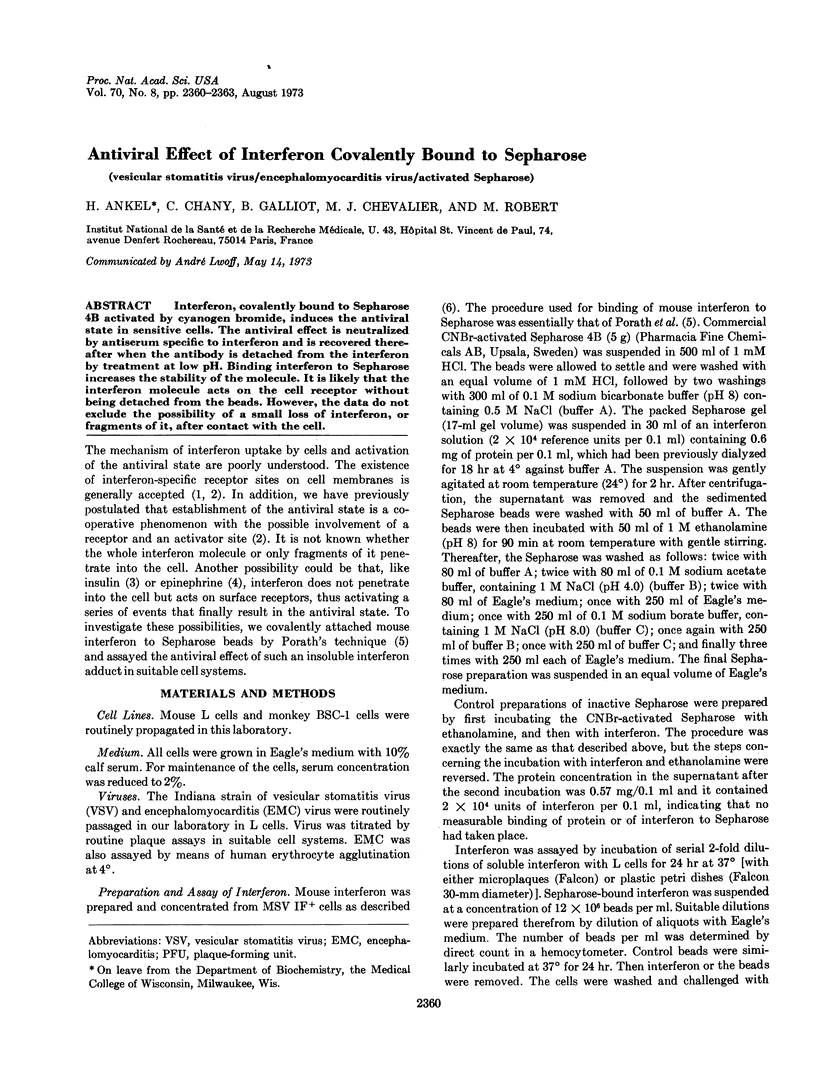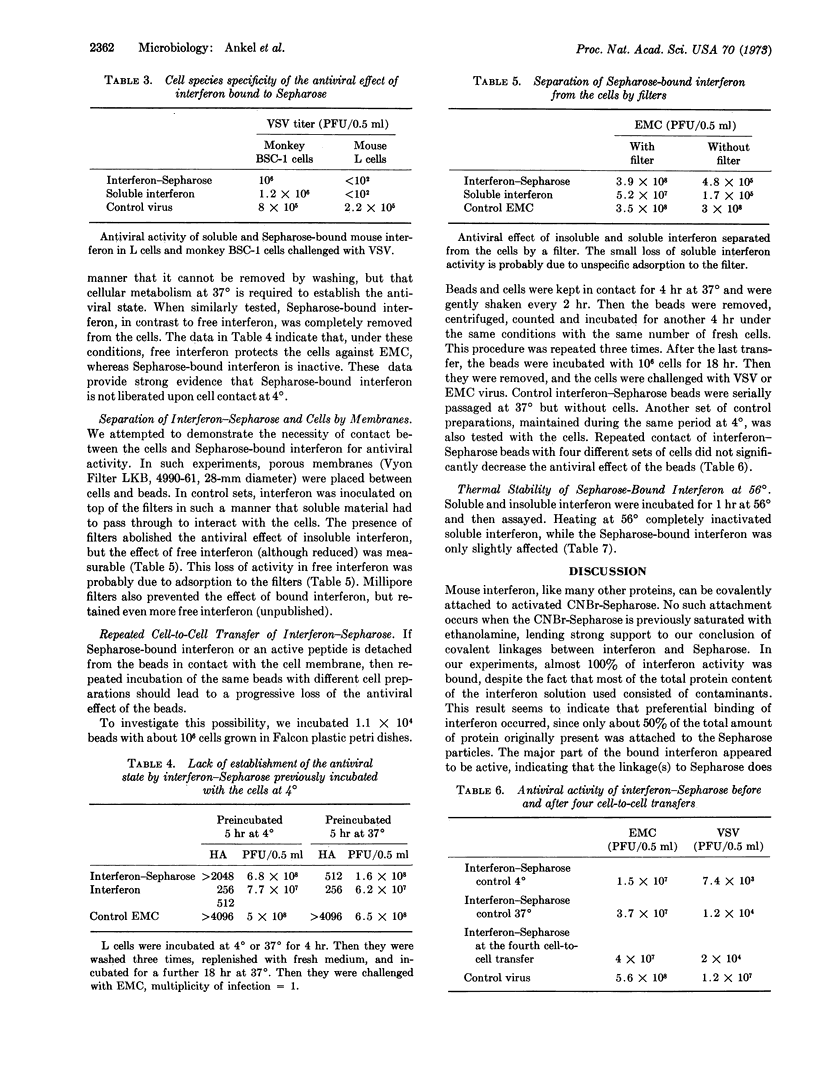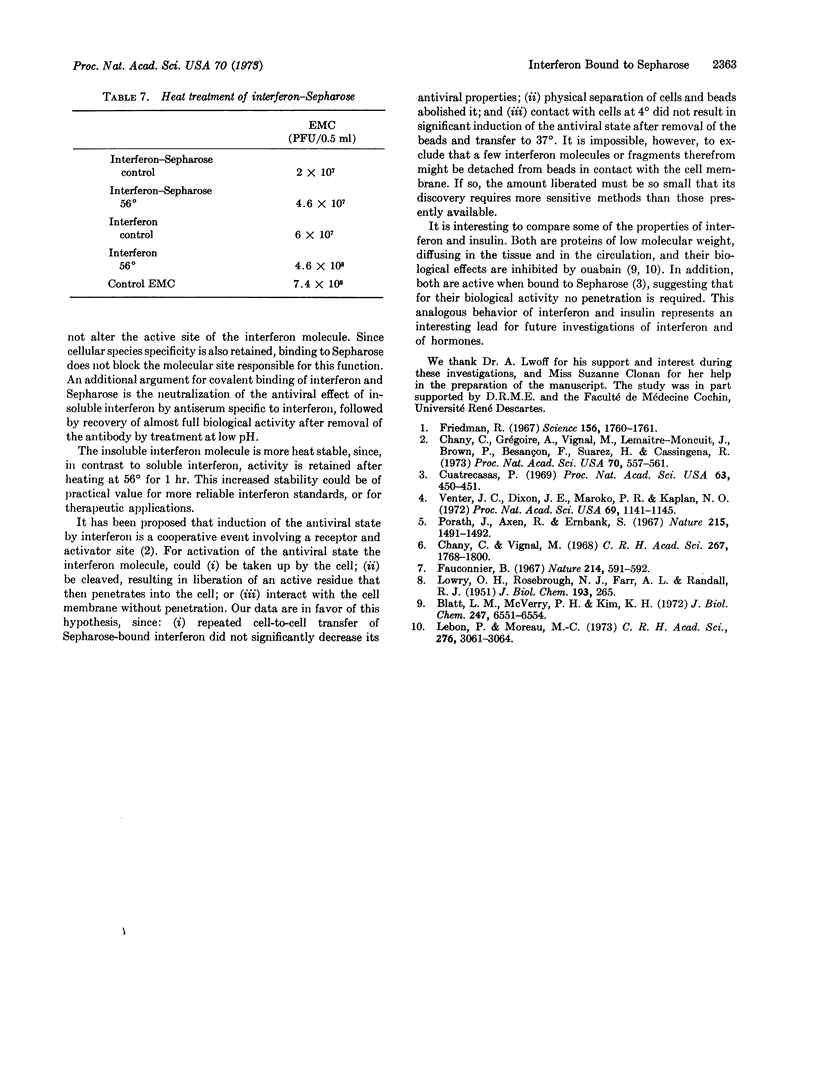Abstract
Interferon, covalently bound to Sepharose 4B activated by cyanogen bromide, induces the antiviral state in sensitive cells. The antiviral effect is neutralized by antiserum specific to interferon and is recovered thereafter when the antibody is detached from the interferon by treatment at low pH. Binding interferon to Sepharose increases the stability of the molecule. It is likely that the interferon molecule acts on the cell receptor without being detached from the beads. However, the data do not exclude the possibility of a small loss of interferon, or fragments of it, after contact with the cell.
Keywords: vesicular stomatitis virus, encephalomyocarditis virus, activated Sepharose
Full text
PDF



Selected References
These references are in PubMed. This may not be the complete list of references from this article.
- Blatt L. M., McVerry P. H., Kim K. H. Regulation of hepatic glycogen synthetase of Rana catesbeiana. Inhibition of the action of insulin by ouabain. J Biol Chem. 1972 Oct 25;247(20):6551–6554. [PubMed] [Google Scholar]
- Chany C., Grégoire A., Vignal M., Lemaitre-Moncuit J., Brown P., Besançon F., Suarez H., Cassingena R. Mechanism of interferon uptake in parental and somatic monkey-mouse hybrid cells. Proc Natl Acad Sci U S A. 1973 Feb;70(2):557–561. doi: 10.1073/pnas.70.2.557. [DOI] [PMC free article] [PubMed] [Google Scholar]
- Chany C., Vignal M. Etude du mécanisme de l'étst réfractaiere des cellules à l1 production d'interféron, près inductions répétées. C R Acad Sci Hebd Seances Acad Sci D. 1968 Nov 18;267(21):1798–1800. [PubMed] [Google Scholar]
- Cuatrecasas P. Interaction of insulin with the cell membrane: the primary action of insulin. Proc Natl Acad Sci U S A. 1969 Jun;63(2):450–457. doi: 10.1073/pnas.63.2.450. [DOI] [PMC free article] [PubMed] [Google Scholar]
- Fauconnier B. Antigenic identity of interferons induced by different viruses in the same cell system. Nature. 1967 May 6;214(5088):591–592. doi: 10.1038/214591a0. [DOI] [PubMed] [Google Scholar]
- Friedman R. M. Interferon binding: the first step in establishment of antiviral activity. Science. 1967 Jun 30;156(3783):1760–1761. doi: 10.1126/science.156.3783.1760. [DOI] [PubMed] [Google Scholar]
- LOWRY O. H., ROSEBROUGH N. J., FARR A. L., RANDALL R. J. Protein measurement with the Folin phenol reagent. J Biol Chem. 1951 Nov;193(1):265–275. [PubMed] [Google Scholar]
- Lebon P., Moreau M. C. Inhibition de l'action de l'interféron par l'ouabaïne. C R Acad Sci Hebd Seances Acad Sci D. 1973 Jun 4;276(23):3061–3064. [PubMed] [Google Scholar]
- Porath J., Axen R., Ernback S. Chemical coupling of proteins to agarose. Nature. 1967 Sep 30;215(5109):1491–1492. doi: 10.1038/2151491a0. [DOI] [PubMed] [Google Scholar]
- Venter J. C., Dixon J. E., Maroko P. R., Kaplan N. O. Biologically active catecholamines covalentyly bound to glass beads. Proc Natl Acad Sci U S A. 1972 May;69(5):1141–1145. doi: 10.1073/pnas.69.5.1141. [DOI] [PMC free article] [PubMed] [Google Scholar]


